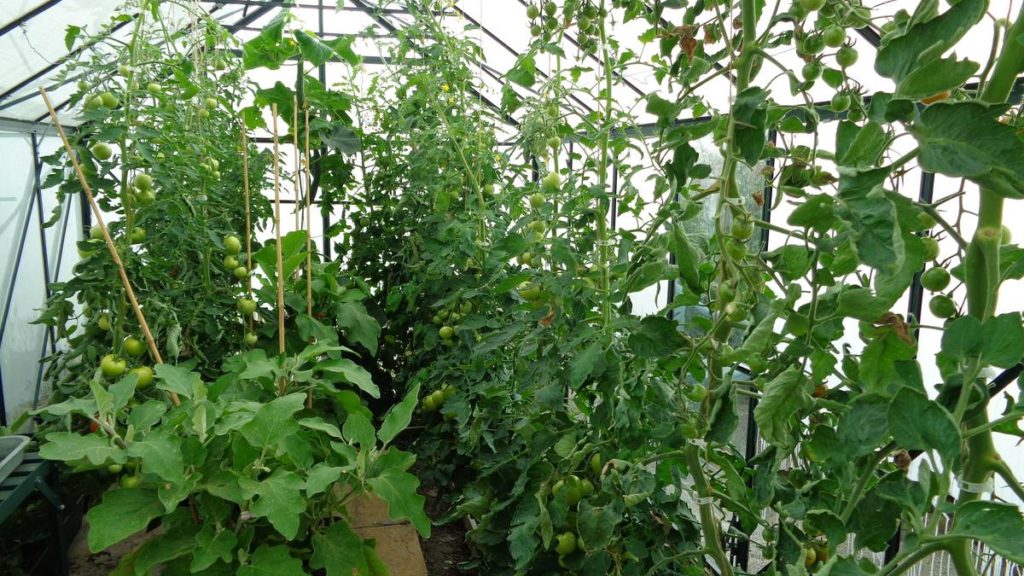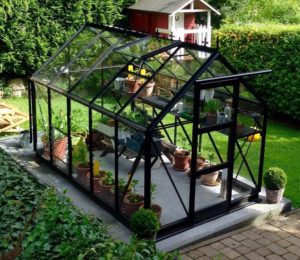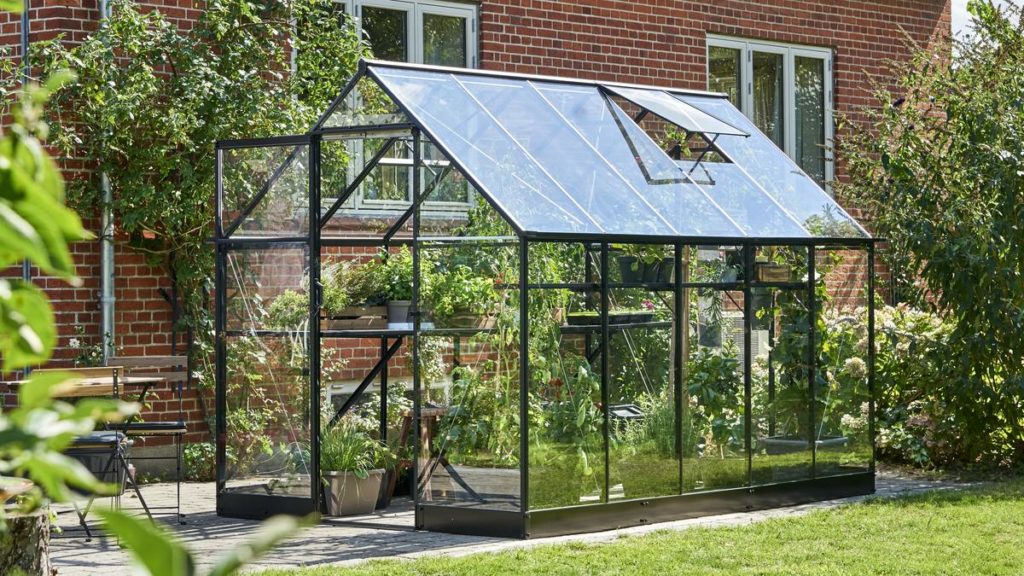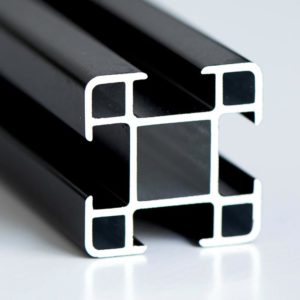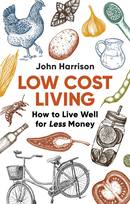When it comes to buying a greenhouse the choice is bewildering. Which frame is best? What glazing? What size to get? This article should help you make the right choice for you.
Which greenhouse frame is best?
The first thing to decide is wood or aluminium.
Wood Greenhouses
Wooden greenhouses do look best being a natural material that will enhance any garden. Wood, of course, can rot and be subject to insect attack. To get a decent lifespan the wood should be pressure treated or thermally treated – a new system that was developed in Sweden for wooden built houses.
The big drawback with wooden greenhouses is cost. A decent quality wooden greenhouse is likely to cost around £2,000. There are cheaper wooden greenhouses on the market but the quality is nowhere near as good. Wooden greenhouses tend to need more maintenance – with the cheaper ones annual treatments with preservatives is recommended.
Aluminium Greenhouses
Most greenhouses nowadays use aluminium for the frame. It’s durable, requires no maintenance and is far less expensive than an equivalent quality wooden greenhouse.
The better quality aluminium greenhouses even offer a choice of colour finishes.
For example, the Elite Craftsman greenhouses offer no less than 11 colour powder coatings as well as silver aluminium. These do add to the cost but if appearance is important to you, well worth considering.
Be aware that not all aluminium frames are the same. Basically the budget models use thinner extrusions than the better models. This may not be important if your greenhouse is in a sheltered spot but critical if it’s in an exposed, windy position.
One notable greenhouse, the Halls Qube Greenhouse, uses a radically different cubic shape for the framing elements. Hence the name Qube, reflecting the cubic design of the bars which simplify construction and are intrinsically stronger than the usual design.
It also uses wire bracing instead of the usual strut system. The Qube Greenhouse comes in black powder coating as standard.
Time will tell but all the signs are this revolutionary design is setting a new standard.
What Greenhouse Glazing is Best?
There are basically four types of glazing.
Traditional horticultural glass. This is relatively inexpensive and if a pane breaks, easily available and cheap to replace. Special sizes can be cut from the standard 2 ft. square panes most glass suppliers stock.
Horticultural glass for the greenhouse
Horticultural glass has a maximum size of 2 feet square so multiple panes are needed which makes cleaning more difficult where the panes overlap. If the glass breaks it breaks into large shards which need careful handling to avoid injury. In gardens where children are running around horticultural glass does present a considerable risk.
Tempered or toughened glass for the greenhouse
Tempered glass is a lot stronger than horticultural glass so can be supplied in larger sheets. This looks neater and is easier to clean. Tempered, often called toughened, glass is not unbreakable though. If it does break it shatters into small pieces. These can give small cuts but nothing like a large sheet of broken glass – so much safer if there are children about.
Tempered glass is considerably more expensive than horticultural glass. Once made it cannot be cut down, so obtaining replacements after a breakage takes longer. They cut a piece of glass to the required size and then temper it.
Single skin polycarbonate greenhouse glazing
The cheapest greenhouses usually come with single skin polycarbonate instead of glass. It is extremely tough so very unlikely to break but it’s flexible and can blow out of the frame. Being lightweight it can fly for long distances in a storm.
Light transmission through polycarbonate is slightly less than glass and it doesn’t retain heat as well as glass so it is inferior to glass for greenhouses. Polycarbonate used to yellow with age but the technology has improved and this shouldn’t be a problem. Polycarbonate glazing is basically a good budget solution.
Double skin or twin-wall polycarbonate greenhouse glazing
This is becoming more popular as it has some advantages over glass. Light transmission is reduced but it is also diffused so plants are far less likely to scorch in strong sunlight. Heat retention is better than glass so twin-wall polycarbonate greenhouse glazing keeps the greenhouse warmer.
It’s almost unbreakable and can be supplied in larger sheets making it easy to install. Twin-wall polycarbonate greenhouse glazing is the safest solution where children are a concern. The cost tends to be higher than toughened glass.
What size greenhouse to buy?
There’s a simple answer to this question – buy as large a greenhouse as you can. Whatever size you have, you’ll need more at the busy time of the year when you’ve masses of seedlings and young plants.
It will depend obviously on what space and budget is available, but don’t forget to allow for extras like staging, vents and automatic vent openers.

